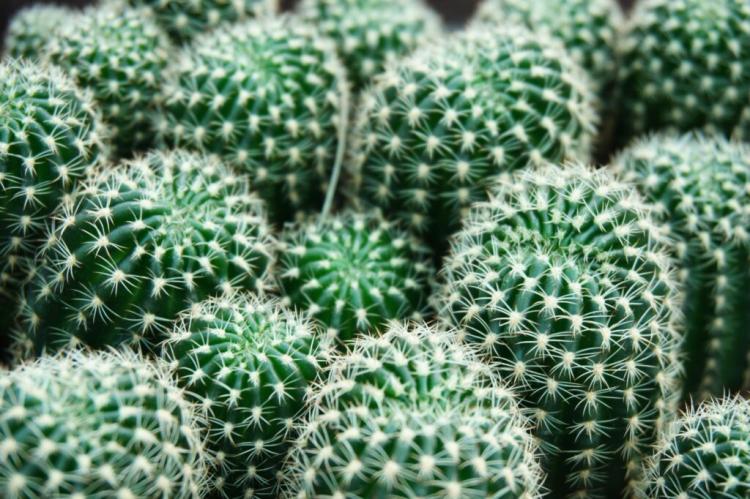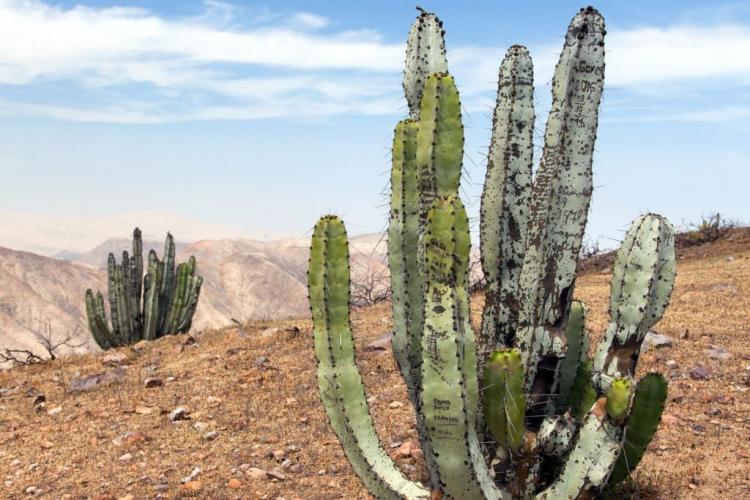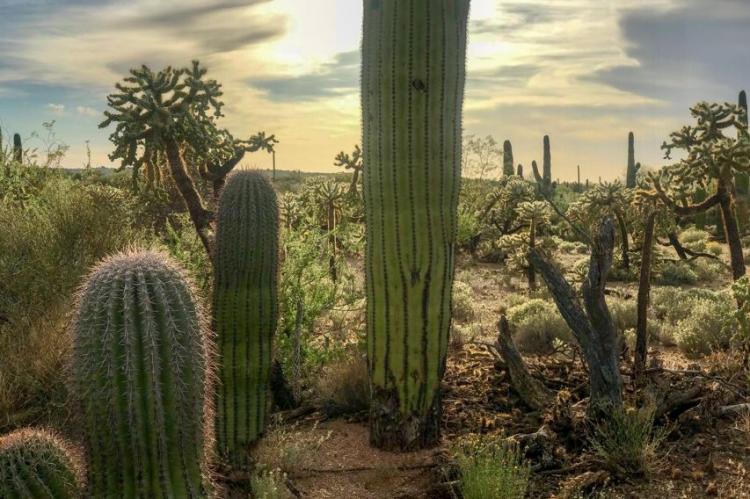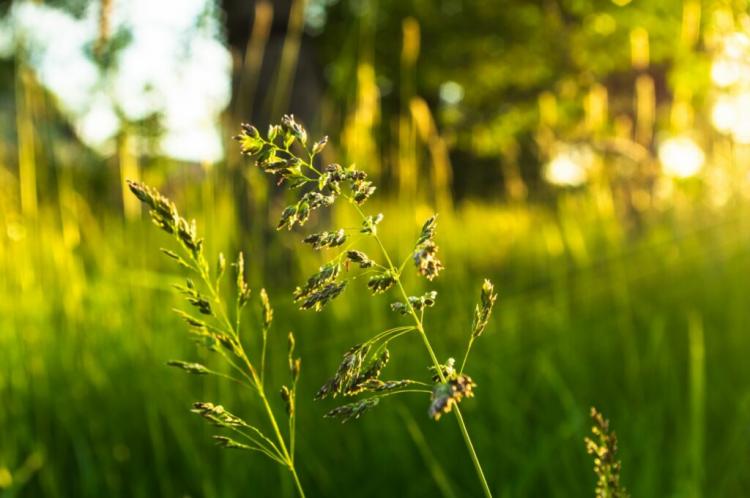Fertilizing cacti: the perfect fertilization for the cactus
Cacti usually accompany their owners for many years. Here you can find out what you should pay attention to when fertilizing a cactus.

The right fertilizer will let your cacti emerge in top form [Photo: Young traveler / Shutterstock.com]
If you don’t have a green thumb, you will at least get a cactus ( Cactaceae ) to make ends meet – at least that’s what they say. In practice, however, one often hears the phrase “With me, even the cacti die”. Fortunately, caring for frugal beings is not that difficult. And with a little knowledge, you can achieve a lot.
Cacti grow slowly. No wonder, because the resilient plants come from the barren regions of America. In order to better understand cacti and their needs, you should dare to look into the world of their prickly contemporaries: It is mostly dry here and the rare availability of water determines the rhythm of life. The surrounding vegetation is sparse and so there are few dead plant parts that could be converted into humus. The earth therefore consists mainly of mineral components. In order to make ends meet, the cactus has to slowly and steadily build up biomass.
With these conditions in mind, you basically have everything you need to know to keep your cactus happy.

Frugality is the highest virtue in the mostly barren home of the cacti [Photo: Daniel Prudek / Shutterstock.com]
When should you fertilize cacti?
Table of Contents
In their homeland it rarely rains, but it does so heavily. Only then can the cacti absorb nutrients from the water. The fertilization is therefore heavily dependent on the watering and should also be done via the irrigation water. Our Plantura organic indoor & green plant fertilizer is ideal for this, as the liquid fertilizer can simply be added to the irrigation water. During the growing season, you should fertilize every one to four weeks, depending on the type of cactus.
In winter, like most plants, cacti need a rest period. That is why the last time of the year is fertilized in August. Only in April or May, after the cactus has started the growing season, is the first dose given again. The main fertilization season is in June and July. During these two months you should allow more fertilizer for your cacti than in May and August.
Recognize deficiency symptoms in cacti
Cacti generally get by with few nutrients. It is therefore usually better to fertilize too little than too much. Too much can quickly lead to soft tissue and horny instincts.
Symptoms of deficiency appear late and do not grow together as quickly. Therefore try to find the right amount of fertilizer. If the cactus begins to lighten, this is a clear sign of a lack of potassium or nitrogen. The lightening is usually strongest at the base of the cactus and sooner or later it becomes woody. The deficiency is also accompanied by a slowdown in growth.

A deficiency in nitrogen and potassium leads to the shift of nutrients from old parts of plants to younger ones – often the base is often yellowed and lignified first [Photo: Romix Image / Shutterstock.com]
The cactus can also lack phosphorus. However, this deficit manifests itself more discreetly in the absence of flowering, because phosphorus is particularly important for the development of flowers and fruits.
The perfect cactus fertilizer
Over 100 species of cacti are known worldwide. It is therefore logical that not all cacti have the same requirements. The family is diverse. Still, there are fundamental similarities in terms of nutritional requirements.

Not all cactus are created equal, but most species have similar claims [Photo: Johnny Coate / Shutterstock.com]
Nitrogen is absolutely vital for cacti. It promotes growth, but in large quantities it also leads to soft tissue and a higher susceptibility to disease. So the perfect fertilizer contains nitrogen, albeit in moderation.
Learn how to repot a cactus.
Potassium is essential for stability, so it is also of great importance for cacti. It also plays an essential role in storing water in the cells. A good fertilizer should therefore contain sufficient potassium, ideally even more than nitrogen. Phosphorus is also more important in fertilization than nitrogen. This nutrient is particularly important for the formation of flowers and fruits.

Sufficient phosphorus is essential for abundant flowering [Photo: TOYGAR ELDEM / Shutterstock.com]
In addition to various essential trace elements, the perfect cactus fertilizer also contains nitrogen, phosphorus and potassium. The main difference to conventional fertilizers lies in the ratio. While fertilizers usually contain significantly more nitrogen than phosphorus and potassium, the reverse is true for cactus fertilizers. If there is as much or even less nitrogen than phosphorus or potassium in the fertilizer, this is suitable as a cactus fertilizer.
Last but not least, you should of course not ignore the pH value. Cacti need a pH value between 6 and 7. Only then do they feel really good and can thrive. If, on the other hand, the value is too acidic or too basic, some nutrients are less available to the plant.
Organically fertilizing cacti: the right approach
Those who like to fertilize their plants organically will be more likely to be disappointed with cacti. In the area of origin of the robust plants, little thrives and so there are few parts of the plant from which humus could be formed. In addition, animals can hardly find anything to eat here, which is why there is little manure. Cacti therefore mainly draw their nutrients from the mineral components of the soil. For primarily organic fertilization, a liquid fertilizer such as our Plantura organic indoor & green plant fertilizer is recommended. Mixed into the irrigation water, the valuable nutrients can easily be added to the previously moistened cactus substrate. One advantage of cacti is that there is no risk of leaching through infrequent watering.
Fertilize cacti with mineral fertilizers
Any fertilizer with the right nutrient ratio is suitable as a mineral fertilizer. Cactus fertilizer naturally fulfills this requirement, but is often more expensive than other fertilizers. Mineral salts can also be dissolved in the irrigation water and used as fertilizer. However, moisten the substrate beforehand before using fertilizer-enriched irrigation water.
Fertilize cacti with home remedies
In fact, there is an organic home remedy that is great for cacti: coffee grounds. This is generally not very rich in nutrients, which makes over-fertilization difficult. In addition, it mainly contains phosphorus and potassium and only in third place nitrogen, which perfectly meets the needs of cacti. As a bonus, coffee grounds are acidic and thus counteract an excessively high pH value. This home remedy can save the day, especially with calcareous irrigation water.
Make cactus fertilizer yourself
Since cacti are more used to a mineral environment, making the fertilizer yourself is not that easy. To do this, you would have to acquire the individual nutrients – i.e. nitrogen, phosphorus and potassium – as well as the micronutrients such as copper and zinc and mix them together in the correct proportions. Apart from the fact that the mixing together requires special conditions, you unfortunately cannot save any money, because the individual nutrients are expensive in household quantities.
Even if cacti are generally the easiest to care for creatures, there are still a few little things to consider. You can find out how to properly care for your cacti in our article on caring for cacti and succulents.





